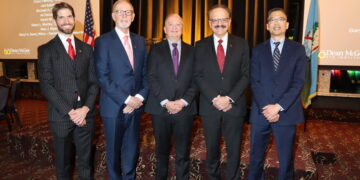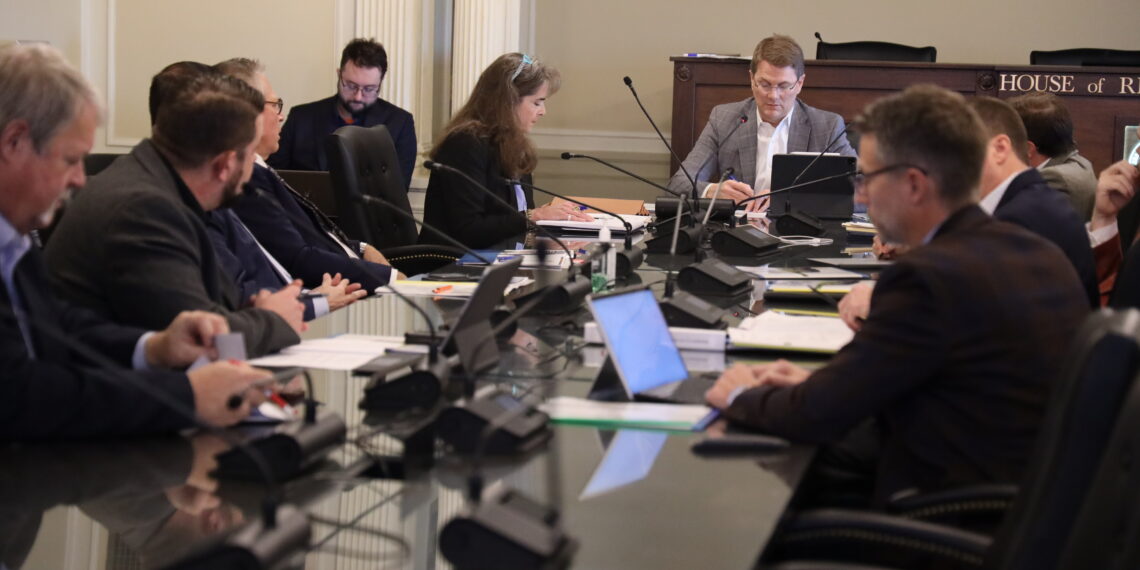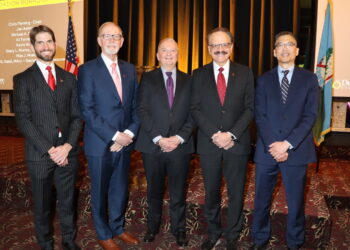OKLAHOMA CITY (OBV) – The Oklahoma Workforce Commission is up and running, working to put together a strategy to harmonize the state’s workforce silos into a more focused and efficient system, but funds from the state are needed, according to a commission member.
Legislation was written during this year’s legislative session to produce funds that would incentivize universities to create degree programs in the state’s critical workforce fields. However, the current plan is to potentially forego that bill and provide money to the Workforce Commission through the appropriations process. The Commission would then use a data- driven approach to make grants to workforce training programs that are producing skilled workers to alleviate shortages in Oklahoma’s critical occupations.
Gov. Kevin Stitt and legislative leaders have been hammering out the budget in a summit that has lasted multiple sessions. During their fifth summit session on Thursday and agreed to appropriate $1 million to the Workforce Commission, plus 10 percent of ARPA funds that were allocated last year, which amounts to around $600,000.
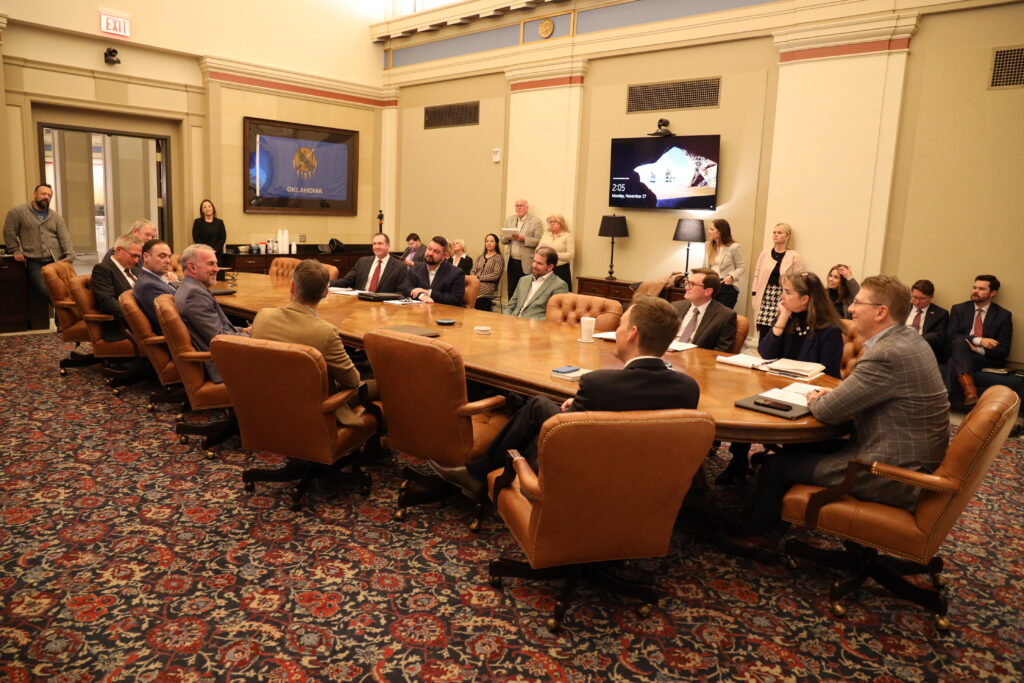
Oklahoma House of Representatives Pro Tem Kyle Hilbert, R-Bristow, asked Senate Appropriations Chairman Chuck Hall, R-Perry, what money appropriated to the Workforce Commission will go towards, during Thursday’s session.
“In the dollars we have set aside, operational expenses would certainly be covered. But I think if the commission is looking to hire some sort of director and sit down and establish a plan for what workforce looks like in the future,” Hall said.
Money given to the Workforce Commission would also be used to hire a director who would oversee implementing workforce strategies, as well as a staff for the commission.
“We’ve got a vision. We need the funding there to enable the vision to be realized,” said Jeff Anderson, a commission member who recently spoke with Oklahoma Business Voice. Anderson is also the director of engineering at Boeing OKC. “I think if we can get the funding in place that will enable us to put the [director] in place, that ultimately funds our ability to build up of our analytics infrastructure to help inform the decisions.”
The Workforce Commission has been meeting monthly since its inaugural meeting at the start of 2024, a half-year after Gov. Kevin Stitt signed Senate Bill 621, the legislation that created the commission, into law.
Tim Pehrson, the head of the Workforce Commission, spoke with Oklahoma Business Voice in March. Pehrson said he and his fellow commissioners have been building the foundation for the state’s future workforce efforts by gathering information from individuals who have deep insight into the state’s workforce system and previous efforts, including educational initiatives.
State officials and business leaders have participated in each Workforce Commission meeting as guest speakers, providing the Workforce Commission vital information and insight into the need for workforce and efforts in various sectors to grow workforce.
Anderson said he is encouraged by what he has learned about Oklahoma’s industries and workforce sectors during the Workforce Commission meetings.
“It’s been very enlightening. Having come predominantly from aerospace and defense, being able to see different parts of the industry and the overarching ecosystem – the tech center infrastructure, the higher education infrastructure, K-12, being able to partner with other groups, other industries to see what their needs are and to see the complimentary aspects of it – I’ve been extremely encouraged at what we have today, and extremely encouraged by the nature of the conversations,” Anderson said. “I’m very hopeful that we’re able to get some of these other basic, foundational elements in place through the legislature and things of that nature to allow us to thrive.”
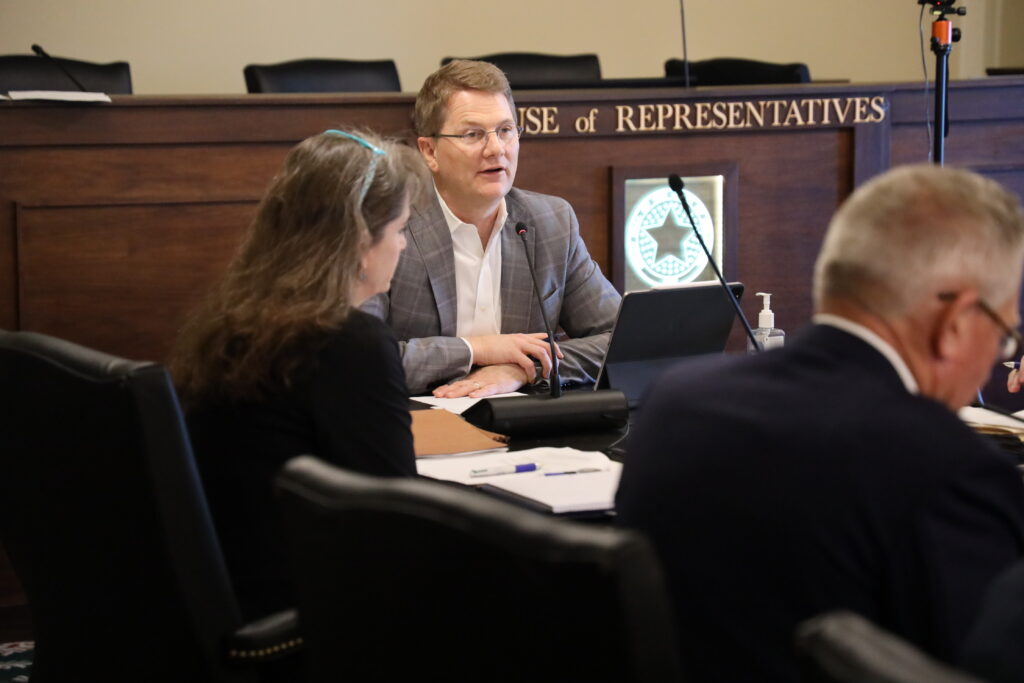
A workforce director, the director’s staff and the data they develop will be instrumental in implementing workforce strategies, Pehrson said.
“Once we get this position hired, of the [director] of this implementation office, she or he can take the ball and really move forward,” Pehrson said. “And then what we can be accountable for is much like a board holding the management accountable to deliver on the long-term strategy and vision that we set. So, it’s early in the game, but it’s exciting. We need economic development to get done in the state so that we can partner with that arm to drive the state’s agenda forward.”
The Workforce Commission’s ultimate objective will be to streamline the state’s workforce processes into a more efficient and effective system that will grow the economy and produce greater numbers of skilled workers not only for the state’s immediate needs but also making investments into long term planning for future needs to with buttress with the state’s economic development efforts.
The commission meetings are giving Anderson insight into how state agencies, workforce entities and educational systems can be brought into harmony to maximize workforce creation efforts.
“I’m seeing the pieces of ways in which the workforce is able to more effectively integrate the different elements within the community. I think if we can get the funding in place that will enable us to put the [director] in place, that ultimately funds our ability to go off and build up of our analytics infrastructure to help inform the decisions,” Anderson said. “I’m seeing all the right building blocks and all the different elements and the partnerships; I’m seeing the energy and the willingness to partner. I’m really excited at the opportunity that’s present and very hopeful about what we’ll be able to do through the rest of the year.”
A shortage of skilled workers is the most pressing concern of Oklahoma business leaders.
The State Chamber Research Foundation, which is part of The State Chamber of Oklahoma, released the 2023 Business Leaders Poll this past summer. The poll is concerned with understanding the nature of workforce challenges Oklahoma businesses face. SCRF surveyed business leaders about struggles in filling skilled positions, workforce quality and availability concerns and the importance of education in growing the workforce.
Fifty percent of business leaders who participated in the poll said skilled, credentialed workers is the most difficult vacancy to fill. The need for more skilled experienced workers is also the primary reason most employers, 29 percent, do not rate the available workforce higher. This theme continues with 50 percent of business leaders saying finding employees with durable skills is their greatest concern when it comes to the available workforce.
Most business leaders, 49 percent, agree that Oklahoma’s education system must be more focused on providing students specialized skills that will meet workforce needs in the state.

It was a long road to get to reach the Workforce Commission.
SB 621 was born from research which revealed a workforce deficiency in Oklahoma. A State Chamber and Business Roundtable joint survey found that 60 percent of Oklahoma’s business community said workforce shortages were the number one threat to business growth and expansion. Chad Warmington, president and CEO of The State Chamber of Oklahoma, and Ben Lepak, executive director of the State Chamber Research Foundation, provided Stitt and legislators research data which showed that Oklahoma was 36,000 workers deficient in filling available jobs.
It was determined that a new, focused workforce management system was needed to grow the state’s workforce and fill the thousands upon thousands of available jobs.
“What we learned very quickly was there’s a lot of good people in Oklahoma doing good work on workforce, but there was no collaboration or coordination between those entities,” said Chad Warmington, president and CEO of The State Chamber. “There was none. No one owner of workforce who at the end of the day, the governor and the legislature could point to and say, ‘Why do we have workforce shortages and what are we going to do to fix it?'”
The Oklahoma Workforce Commission will direct the state’s workforce development strategy and administer and oversee funding allocated by the legislature for workforce development initiatives. The commission can contract with outside parties to achieve its goals.
“How can we ensure across the entire enterprise of systems and agencies, and individuals and entities that build our workforce, how can we ensure we are creating men and women with the skillsets that they need – whether it be aerospace, engineering, biomanufacturing, agribusiness, healthcare, whatever jobs may exist for my five year old in 2040 that don’t even exist today – and who will be in charge of that?” Pugh said in February. “Senate Bill 621 seeks to provide that answer. And it will work with business leaders in the private sector, with education leaders and with government leaders to ensure that [state government leaders] are not the ones growing the economy, that we’re giving you all the tools you need to grow the economy.”
Pugh filed SB 621 in January, days after Stitt issued Executive Order 2023-02 to streamline and refocus the state’s workforce management process. The executive order called for the creation of a Workforce Transformation Task Force. Warmington and Oklahoma Commerce Secretary Chad Mariska co-chaired the task force, which was composed of private sector leaders and public officials. The task force identified how funding could be aligned with workforce goals and economic needs and implemented a comprehensive strategy that will change workforce for the better.
The Task Force concluded that Oklahoma needs a “single owner” of workforce development that serves as a statewide coordinating body for agencies and stakeholders involved in workforce and talent development.
The Commission is envisioned as being composed of nine members, each a representative from Oklahoma’s private business sector, with the governor appointing three members, the House speaker appointing three members and the Senate pro tem appointing three members. The bill has a five-year cooling off period for former state employees to be appointed to the Commission, since appointees were to be from the private sector.
Oklahoma had a 3.2 percent unemployment rate, with roughly 62,000 people unemployed, according to the U.S. Department of Labor’s Bureau of Labor Statistics.
Unemployment routinely stays below 4 percent in Oklahoma, but thousands of jobs across the state remain open each month. ‘
“It is a super exciting day for me and all of us up here and really for the business community,” Stitt said prior to signing the legislation into law. “As we’re recruiting companies, we hear over and over and over again that it’s all about workforce; [they ask if] they can get the workers that they need.”
Officials from relevant state and local agencies, departments, educational institutions, boards and commissions – like the Oklahoma Employment Security Commission, Department of Rehabilitative Services, Department of Corrections, Department of Education, State Regents for Higher Education, Department of Career and Technology Education, Department of Commerce, Oklahoma Office of Workforce Development, Department of Human Services and Department of Labor – are participating in the Commission’s process in an advisory capacity.
Oklahoma CareerTech is playing a key role in the Oklahoma Workforce Commission, helping with strategic solutions for growing the workforce.
Legislators determined that it was essential that local experts administering and running the state’s workforce development programs have a seat at the table with the Workforce Commission as strategic goals are identified and implemented to grow the state’s workforce. The Commission will retain ultimate control and decision-making authority, but advisory committee members will be actively engaged in the process. State officials in advisory roles will be non-voting commission participants since the entities they represent will have opportunities to be awarded funds from the Workforce Commission.
The Oklahoma House of Representatives, Senate and governor each selected three members to compose the nine-member Commission. The right to appoint the Commission’s chair was given to the governor. Stitt appointed Tim Perhson, president and CEO of INTEGRIS Health. All three have the ability to remove their own appointees and reappoint appointees to additional terms. Commissioners have no term limits.
Commission responsibilities include reporting requirements and a public data dashboard on workforce efforts. The reports and public dashboard will provide elected officials, state entities and the public access to data impacting the state’s ability to meet workforce demands through current programming. It adds a level of transparency that was expected from the Commission, but not specifically addressed in the original version of the bill. The Commission is also required to make recommendations to the legislature to improve workforce development programs in the state.
The Commission must also administer the Workforce Coordination Revolving Fund, which was appropriated $5 million to coordinate workforce development activities.


